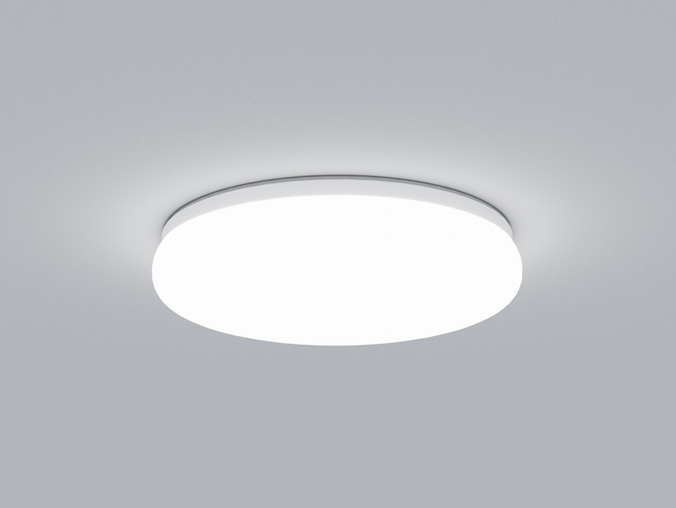

The suitable warm light temperature for pendant lights for bedroom ranges from 2200K to 3500K—this range balances relaxation, visual comfort, and practicality. 2200K–2700K (extra-warm white) emits a soft, amber glow similar to candlelight, ideal for evening unwinding or creating a cozy “nesting” atmosphere. 2800K–3500K (warm white) delivers slightly brighter, more neutral warm light, perfect for daytime bedroom activities (e.g., making the bed, casual reading) without feeling harsh. Unlike cool white led pendant lights (4000K+) that disrupt sleep by suppressing melatonin, or overly warm 2000K lights that cause eye strain in low light, this range aligns with the bedroom’s role as a “rest zone.” Premium pendant lights like IMIGY’s circle pendant light (dimmable, adjustable) and Halo-derived bedroom pendants offer precise warm light control, while pairing seamlessly with Bean Ceiling Lights (for ambient lighting) or other ceiling lights for living room (repurposed for small bedrooms). The following breaks down temperature choices and our products’ advantages.
1. Key Warm Light Temperature Ranges & Uses
a. 2200K–2700K (Extra-Warm White)
Best for: Evening/night use (1 hour before bed, night lights).
Benefits: Mimics sunset or candlelight, reduces eye strain, and boosts melatonin production—critical for improving sleep quality. Avoids the “blue light” effect of led pendant lights with higher.
Ideal Scenarios: Master bedrooms (paired with dimmable circle pendant light), children’s bedrooms (soothing for bedtime routines).
b. 2800K–3500K (Warm White)
Best for: Daytime use (morning routines, casual reading) or small bedrooms with little natural light.
Benefits: Brighter than extra-warm white (enough to see details like clothing textures) but still warm—avoids the “clinical” feel of cool white pendant lights. Works well with natural light (e.g., south-facing bedrooms).
Ideal Scenarios: Guest bedrooms (versatile for day/night), small bedrooms with no windows (paired with Bean Ceiling Lights for layered warmth).
2. IMIGY Products’ Warm Light Advantages
a. Circle Pendant Light (Bedroom-Focused pendant lights for bedroom)
Adjustable Warm Temperature: Supports 2200K–3500K stepless adjustment—switch to 2500K for bedtime reading, 3200K for morning dressing. Unlike fixed-color pendant lights (limited to one), this flexibility fits all bedroom activities.
Dimming Synergy: Pair 2200K warm light with 10%–30% brightness (night light mode) or 2800K with 50%–70% brightness (daytime use). The isolated driver ensures stable light output (no flicker) even at low brightness—unlike cheap led pendant lights that dim unevenly.

Pairing with Bean Ceiling Lights: In small bedrooms, install the circle pendant light (2500K, above the bed) and a mini Bean Ceiling Light (3000K, central) — creates layered warm light without color clash. The ceiling light’s 3000K warm white complements the pendant’s 2500K, avoiding the “mixed color” chaos of mismatched ceiling lights for living room.
b. Halo-Derived Bedroom Pendant Light (Modern circle pendant light)
Fixed Premium Warm Temperature: 2700K (extra-warm) or 3000K (warm white) options—calibrated for bedroom use with CRI ≥90. Unlike generic pendant lights with distorted warm colors (e.g., 2700K looks yellowish), it maintains accurate warmth.
Safety & Comfort: Uses low-blue-light LED chips (≤5% blue light content at 2700K)—safer for long-term night use than standard led pendant lights (10%+ blue light). The hollow halo design diffuses light evenly, avoiding harsh spots on bedding or walls.
Smart Control: Syncs with Alexa/Google Home for voice-controlled—no need to reach for switches during bedtime.
3. Practical Tips for Choosing Warm Light Temperature
a. Consider Natural Light
Low natural light (north-facing bedrooms): Choose 2800K–3000K (brighter warm light) to compensate for dimness.
High natural light (south-facing bedrooms): 2200K–2700K works (natural light balances warmth, avoiding over-brightness).
b. Match Bedroom Size
Small bedrooms (≤10㎡): 2500K–3000K (avoids overly warm 2200K that makes small spaces feel cramped).
Large bedrooms (≥15㎡): 2200K–2700K (adds coziness to spacious areas, paired with 1–2 extra pendant lights).
4. Mistakes to Avoid
Don’t Use ≤2000K Lights: Overly amber light causes eye strain (hard to see details) and makes the bedroom feel “gloomy.”
Don’t Mix Warm & Cool Lights: Pairing a 3000K circle pendant light with 4000K ceiling lights for living room (repurposed) creates visual confusion—stick to all warm light in bedrooms.
Don’t Ignore Dimming: Even 2700K warm light feels harsh at 100% brightness—always choose dimmable pendant lights for bedroom to adjust intensity with 色温.
The suitable warm light temperature for pendant lights for bedroom is 2200K–3500K, with 2200K–2700K ideal for relaxation and 2800K–3500K for versatile day/night use. IMIGY’s circle pendant light (adjustable 2200K–3500K) and Halo-derived bedroom pendants (2700K/3000K) stand out for precise warm light control, outperforming fixed-color pendant lights or cool white led pendant lights that disrupt sleep. These fixtures pair harmoniously with Bean Ceiling Lights or other warm-light ceiling lights for living room, creating a cohesive, sleep-friendly atmosphere. Whether you’re designing a master bedroom, guest room, or children’s room, contact us to choose the perfect warm light pendant lights for bedroom—we’ll tailor recommendations to your space size and natural light conditions.
It is recommended that you upgrade the latest browser
 Chrome
Chrome Firefox
Firefox Edge
Edge